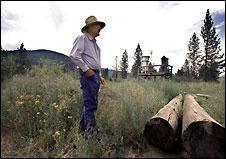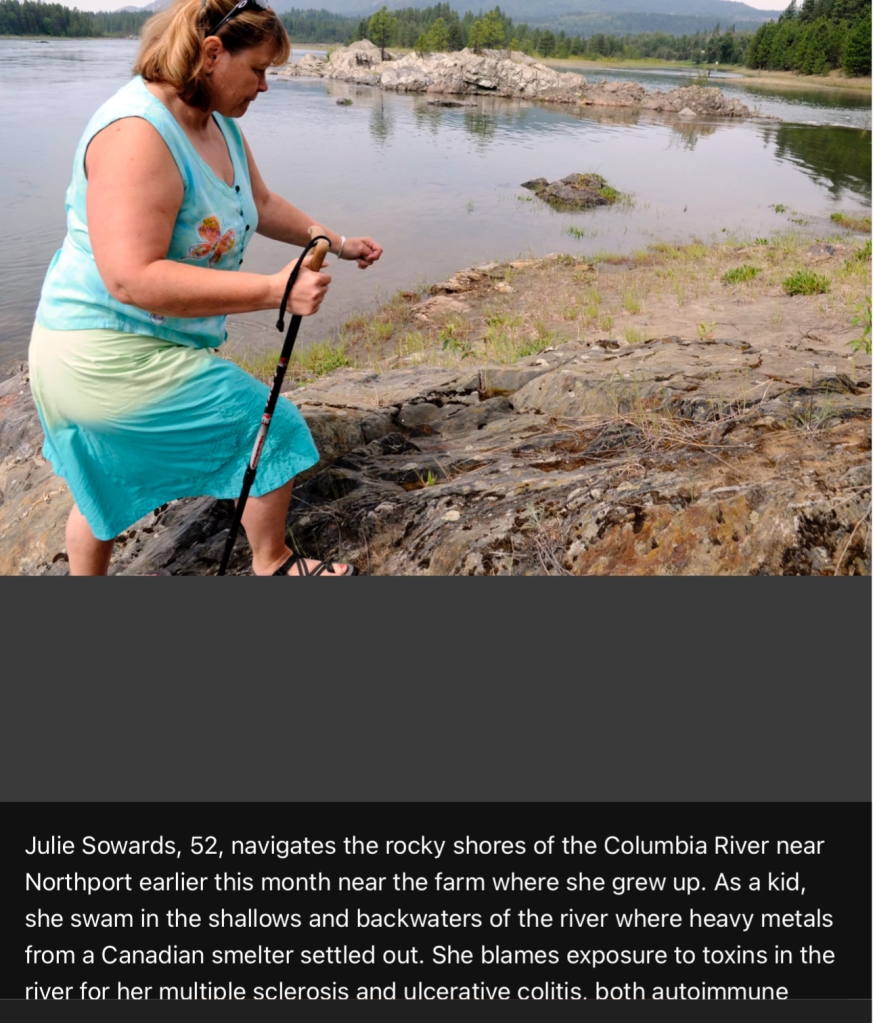A New Name for a New Beach?
Recently Teck America, along with the Department of Ecology, removed 9,100 tons of slag from Black Sand Beach. Slag is a by-product of the smelting process. It is a black, glass like material, which resembles sand and contains heavy metal toxins. When the slag, that the beaches name was derived from, was hauled off, the visual reminder of what Teck’s pollution had done to our beloved river was gone. In its place is a beach of clean sand and gravel, created from the accurate studies and clean-up that took decades to achieve.
From 1906-1996 Teck, (formerly Teck Cominco), a Canadian smelter in Trail B.C., released 450 tons of slag a day into the Columbia River. It was quickly carried down river into the United State, where the speed of the river decreased as it navigated through bends and curves, sandbars and any other speed bumps Mother Nature created. The century of slag settled throughout many areas of the Upper Columbia River, including the banks and beaches. Black Sand Beach was created from the accumulation of slag.
Logically the residents named it after what it appeared to be; a beach of black sand. Unfortunately it was not sand, and the residents who spent their summers playing on the beach and swimming in the water were never told what the “sand” was, or warned of the impact it would have on their health decades later.
The organizations and individuals mentioned below spent decades fighting for accurate studies, extensive research, and epidemiological studies for the Upper Columbia River and the small communities living along it.
Thanks to Citizens for a Clean Columbia (CCC), The Colville Confederate Tribe, The Lake Roosevelt Water Quality Council, The Upper Columbia United Tribes, Lake Roosevelt Forum, and every other group and individual who united to get studies done on the Upper Columbia River and then brought attention to the contamination the research discovered. The results of their research & persistence forced Teck to stop dumping slag into the river in 1996.
Thanks to the members of the Pakootas Tribe who had the courage to petition the EPA and finally get the ball rolling on the previous and current Remedial Investigation & Feasibility Studies, as well as the Human Health Risk Assessment.
Thanks to the countless others I did not specifically name. It is because of the participation of each individual person, fighting for the same goal, which brings about change.
In CCC’s current newsletter, “Black Sand Beach No More” describes the clean-up of Black Sand Beach by Mindy Smith, MD. She concludes the article stating ; “We are also interested in renaming the beach – perhaps in honor of Frank Ossiander who tirelessly fought for attention and remediation of toxins in our river.”
I was lucky enough to have had the chance to come to know Frank. He knew if the studies and assessments of the Upper Columbia River were done objectively and accurately, using scientifically proven methods and models, the results could provide vital information needed to ensure that safety of the environment and health of future generations.
He volunteered as a statician for the CCC and ,in my opinion, became the watchdog of the studies and research being done by Teck, the EPA, Ecology and the Department of Health. He submitted lengthy lists of indiscrepencies, inaccurate information, incorrect procedures, models and formulas they used, or plan to use, in their studies. He also provided suggestions to remedy the mistakes and flaws he found in their work plans and assessments. These mistakes, if not corrected , would make the results of the studies just as dangerous as the toxins they were studying.
It was obvious to Teck and these agencies that Frank was correct on the mistakes he found and suggestions he made. As he continued to find mistakes and offer suggestions on every study they did it was also obvious Frank was not going to stop watching.
Frank’s persistence inevitably saved many lives and more damage to our environment, not to mention he was a constant reminder to the smelter and those government agencies that someone was watching.

Frank Ossiander
I think a more deserving name could not be found for the new beach, created from the work & dedication of so many people, and under the watchful eye of Frank.
Frank passed away late last year. I am honored to have known him and will forever be grateful for the help and advice he gave me. He became a mentor, helping me navigate my way through a field of studies and topics completely foreign to me. He also became a dear friend, whose support and help changed the course of my life. Frank’s support and help changed the course of all of our lives, and the lives of future generations.
The results of Frank’s work are accurate studies and assessments that create successful end results, like the clean-up of Black Sand Beach. The new beach is a visual reminder of the importance to ensure the accuracy of the future studies and assessments done. Our watchdog may be gone, but before he left he taught us all what to watch for.
Great Idea Mindy!!
-Jamie Paparich




So touching, great idea!
LikeLike
Again, great post! Loved the story about Frank.
LikeLike